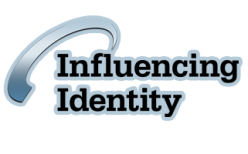The Simple Use of A Name Tag
Name tags are a friendly greeting, a statement of your name, and, more importantly, a direct line from you to your end consumer or goal; such a simple and yet efficient idea. Wear it around your neck or on your shirt, maybe put it on your desk as a name plate. A name tag identifies who you are and what your presentation or purpose is.
Name tags are used by customer service companies so that customers are able to identify employees at a quick glance. Professional organizations where employees do not wear uniforms may use name tags as a way of distinguishing or identifying themselves.
By wearing a name tag, you let the work know who you are. You show them the pride you have in your name. This name can represent you, your company or your goal or purpose. But in any way, you are showing how much pride you have in this name or purpose; you let them know that you’re serious about your name or purpose. By wearing a name tag, you let your customers and those around you know what you’re really about.
While the presentation is simple, the message goes way beyond that. A name tag can be used as a point of intrigue. By using only a first name on a name tag, it gives the consumer an opportunity to ask more in depth questions about who you are and will help them learn what you’re truly all about.
By identifying yourself with a name tag, you’re making a statement. You’re telling those around you that you’re proud to go by that name and that you’re proud to be representing yourself or your purpose. A name tag is not only your name but can also include more explanation about your cause. Perhaps there might be a title that has been given to you, maybe one that has been earned that you’re proud of.
By wearing a name tag, you become the face of your purpose, and you are representing that to everyone around you. In many ways, this benefits you and your purpose so that the customer is able to put a face with a name. It has been said that “a picture is worth a thousand words;” you tell that story with your smile and a name tag. Wear your name tag proudly and let it serve its purpose!

